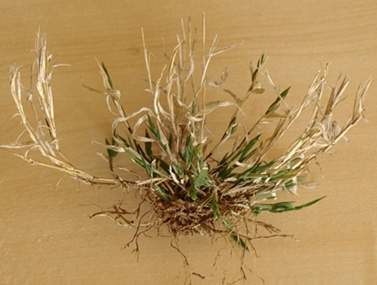Do you have some brown “grassy” spots in your lawn this Spring? If so, it could be a common weed in our area named Nimblewill.
Nimblewill Plant
While this weed is often confused with Bermuda grass, there are distinct features of this plant that set it apart from this and other grass species. One is its mat-forming spreading habit. Nimblewill spreads by stolons that run along the surface of the soil, whereas many other grasses, like Bermuda, spread via rhizomes. It can also spread by seed if allowed to flower in late summer. Nimblewill is also much shorter and wiry looking with narrow blue-green leaves. Nimblewill favors moist, shady areas but will also tolerate some sun. Since it doesn’t tolerate cold conditions and goes dormant from fall throughout late spring, Nimblewill is rather easy to spot in cool-season grasses during this time—appearing as brown, fuzzy patches throughout the lawn.
Nimblewill Control – Unfortunately, there aren’t any magic nimblewill herbicides to fully eradicate this plant. Nimblewill is difficult to get rid of, so any nimblewill treatment will likely focus more on soil or lawn improvement than anything else. Reseeding the area following treatment may also be necessary. If there are other weeds to contend with as well, you can choose a non-selective herbicide like Round-up or Killzall for spot treatments. It’s probably a good idea to treat nimblewill areas before dealing with other issues that may be causing its growth. Late summer, prior to its flowering and seeding, is a good time to start nimblewill control, as you can treat the area and make any necessary adjustments to the soil prior to reseeding in fall. Once herbicide has been applied, you’ll want to focus on other issues like soil drainage, aeration, pH levels, and possible shade reduction since the weed grass thrives in shade and moisture. Have the soil tested and make necessary adjustments, such as loosening and amending the soil and adding lime, to improve its overall health. Remove any branches or overgrowth that may be shading the area as well. Fill in low spots or depressions that may also be present.
The best prevention for Nimblewill is to have a good thick lawn to prevent the weed from germinating from seed. If you have any questions about Nimblewill or other weeds in your lawn or garden; stop by Burger Farm and Garden and we’ll help you find the right solution to your problem.
Article by Nikki Tilley


